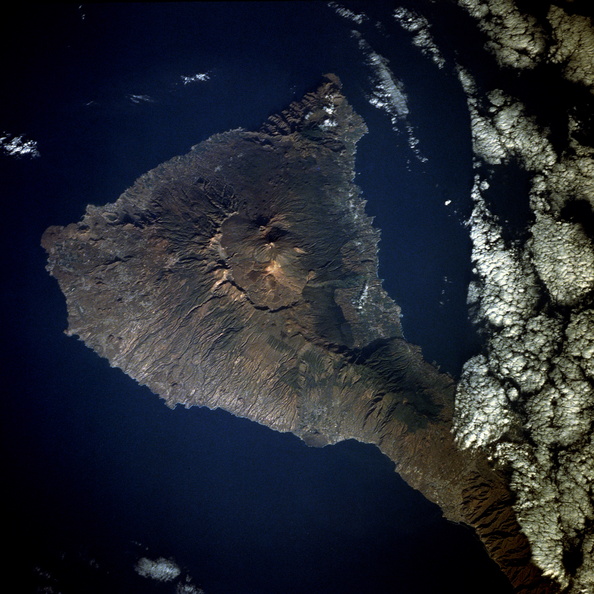
WIKIARCHIVES.SPACE
The Human Spaceflight Archive

Information
- Taken in
- Space
- Author
- NASA
- Description
- Tenerife Island, the largest in the Canary Island archipelago, is approximately 50 miles (80 kilometers) long and 32 miles (54 kilometers) at its widest point. With Pico de Teide, its volcanic peak, rising 12 198 feet (3718 meters) above the sea, Tenerife has the distinction of having the highest elevation in the Atlantic Ocean. This near-vertical photograph of the entire island, except for the northeastern tip, showcases the prominent caldera, which measures approximately 10 miles (16 kilometers) by 7 miles (11 kilometers). Within the large caldera, young volcanic cones and small craters rise from the older volcano that was probably destroyed by a gigantic explosion millions of years ago. The classic radial erosion drainage pattern is obvious around the old volcanic cone. The island, with its precipitous coastline, has a mild and pleasant climate; however, it is subject to severe drought and occasional tornadoes. The fertile soils produce a variety of crops—date palms, grapes, fruits, sugarcane, grains, and cotton.
- Created on
- Albums
- US SPACE PROGRAM / SPACE SHUTTLE / MISSIONS / STS-43 / Mission Photos (Edited)
- Source link
- https://www.flickr.com/photos/nasa2explore/9361377888/in/album-72157634783690666/
- Visits
- 54
- Rating score
- no rate
- Rate this photo
- License
- CC BY-NC
- Modified by WikiArchives
- No (original)
- Downloads
- 0
Powered by Piwigo












